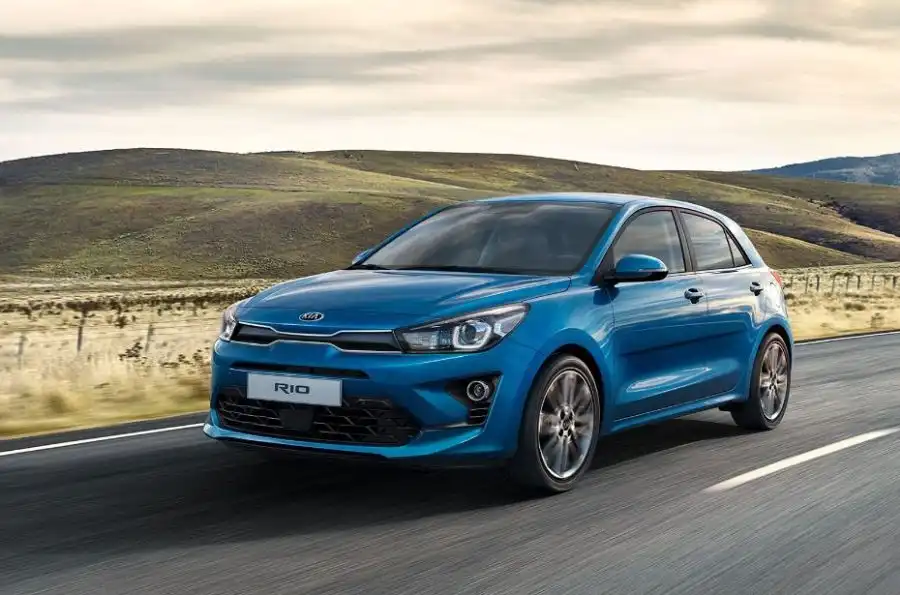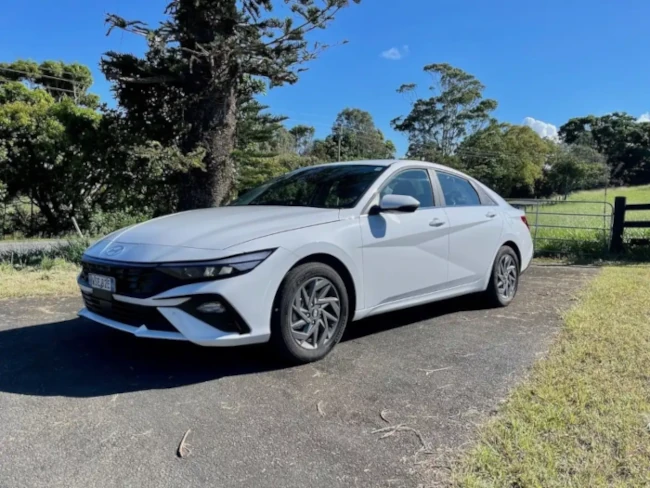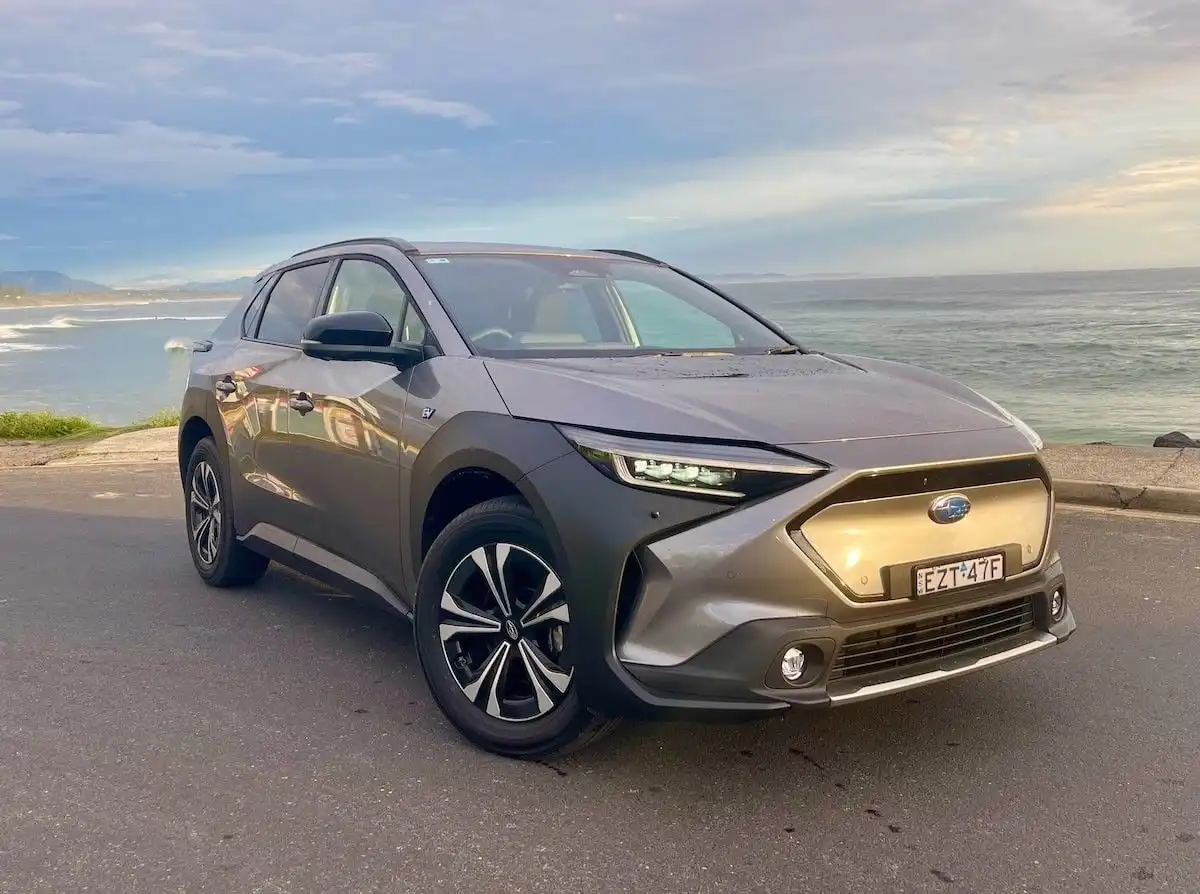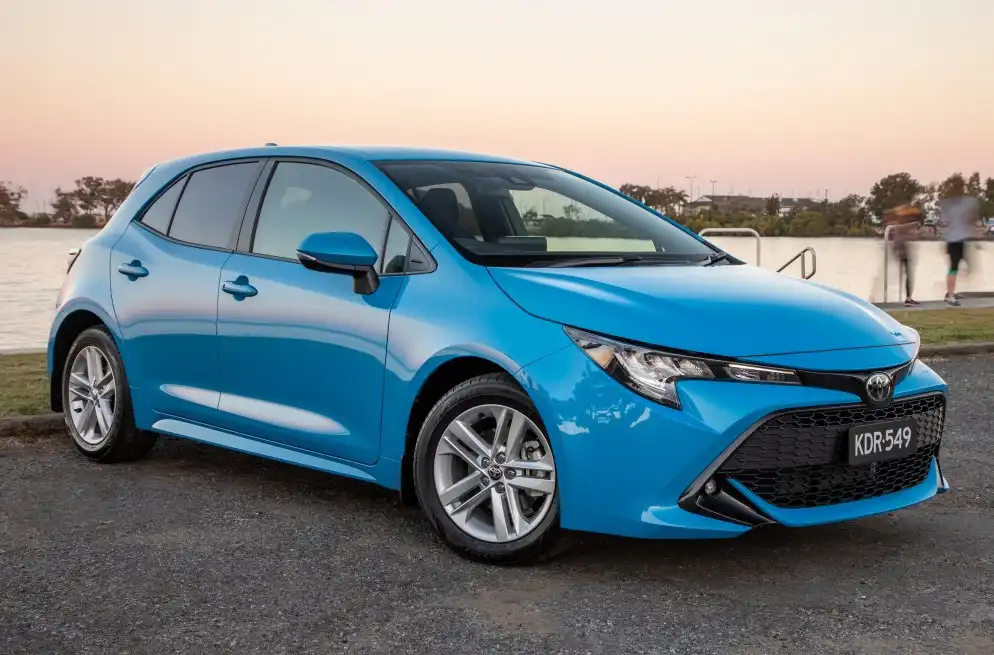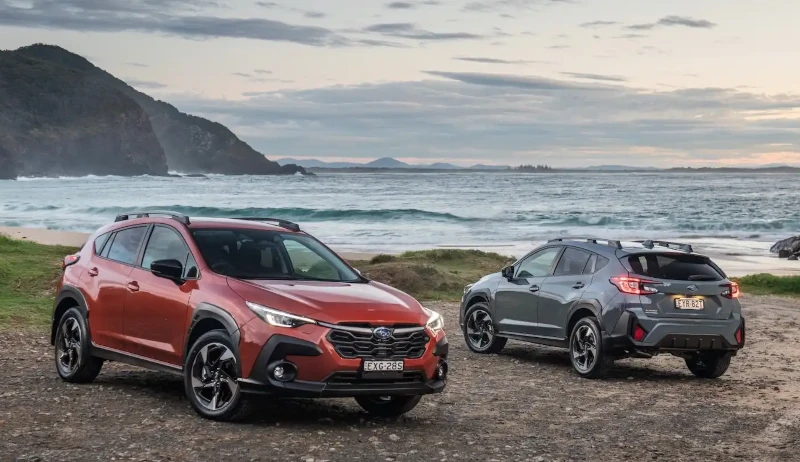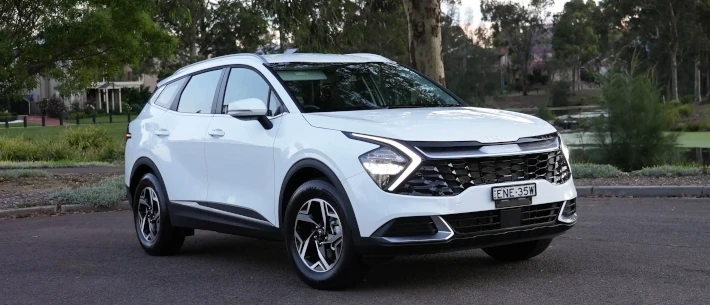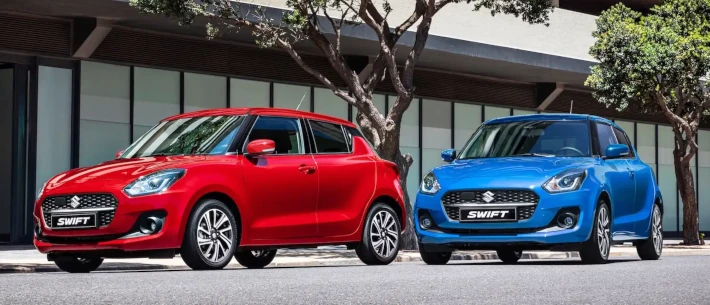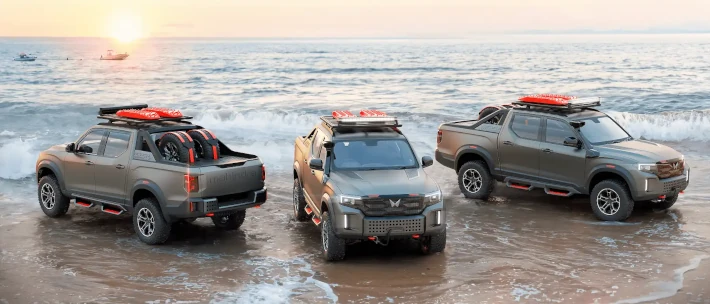It goes up against cars like the Mazda 2, MG MG3, Toyota Yaris and Suzuki Swift in the light car segment, while undercutting some of its rivals on price quite significantly.
Just what sacrifices are buyers making with this value for money proposition? Let’s find out by taking a closer look at the latest generation Kia Rio.
Starting Price: $19,690
OnlineAuto Savings: Enquire now
Kia Rio (YB PE MY22) Specifications
| Model Date | 2022 |
| Make | KIA |
| Model | RIO |
| Series | YB PE MY22 |
| Variant | SPORT |
| Body | 5D HATCHBACK |
| Fuel type | UNLEADED PETROL |
| Transmission | 6 SP AUTOMATIC |
| Drive | FWD |
| Engine | MPFI |
| Engine capacity | 1368 |
| Engine configuration | VARIABLE DOUBLE OVERHEAD CAM / 16 valves |
| Engine RPM | 6000 / 4000 |
| Cylinders | 4 |
| Torque | 133 |
| KW | 74 |
| Fuel tank size | 45.0 |
| Fuel usage specs | 6.0 / 0.0 |
| CO2 | 143 |
| ANCAP security rating | 5 |
For more details and other variants, check Kia Rio car page.
Need help narrowing down your choices?
Get in touch with one of our Car Buying Specialists today
Request a quoteHow Much Does It Cost?
The Kia Rio lineup kicks off from $19,690 for the entry-level Rio S manual, while the Rio SX manual and Rio Sport automatic are priced at $20,090 and $21,190 respectively.
Stepping up to the Rio S automatic comes at a price of $21,990, while the SX and Sport automatic variants are priced at $22,390 and $23,490 respectively.
Finally, the range-topping Rio GT-Line is priced at $25,590.
Keep in mind that these prices are subject to change, and do not include on-road costs.
How Much Can OnlineAuto Save You?
Using OnlineAuto’s car purchasing service, one of our car specialists can help you save and find the best value model for you.
What Features Does the Kia Rio Have?
The entry-level Kia Rio S comes riding on a set of 15-inch steel wheels and receives automatic headlights, a reversing camera with rear-mounted parking sensors, power windows, an adjustable steering column and an 8.0-inch infotainment system with Apple CarPlay & Android Auto.
Stepping up to the Rio SX adds a set of 17-inch alloys, cruise control, panoramic sunroof, heated power-folding mirrors, premium steering wheel and gear lever, as well as rear privacy glass, while the Rio Sport receives the same features atop autonomous emergency braking with lane keep assistance.
Finally, Kia’s range-topping Rio GT-Line receives a turbocharged engine, as well as LED daytime running lamps and fog lights, climate control, engine stop/start, a GT-Line styling package, sporty steering wheel and metallic pedals.
Range Features:
-
15-inch steel wheels
-
Automatic headlights
-
Reversing camera with rear-mounted parking sensors
-
Powered windows
-
Adjustable steering column
-
8.0-inch infotainment system with wireless Apple CarPlay & Android Auto
-
17-inch alloys (SX)
-
Cruise control (SX)
-
Panoramic sunroof (SX)
-
Premium steering wheel & gear lever (SX)
-
Rear privacy glass (SX)
-
Autonomous emergency braking (Sport)
-
Lane keep assist (Sport)
-
Turbocharged engine (GT-Line)
-
LED daytime running lamps & fog lights (GT-Line)
-
Climate control (GT-Line)
-
Engine stop/start (GT-Line)
-
GT-Line stying package (GT-Line)
-
Sporty steering wheel with metallic foot pedals (GT-Line)
Kia Rio Colours
The Kia Rio is available in a choice of six colours, including Sporty Blue, Perennial Grey, Mighty Yellow, Silky Silver, Signal Red and Aurora Black Pearl.
Is it Comfortable to Drive?
The latest generation Kia Rio takes a no-frills approach to motoring, offering buyers a surprisingly refined back to basics commuter that is perfectly suited to commuting through town.
Power for the majority of the range is supplied by a 1.4-litre four-cylinder petrol engine that produces 74kW of power and 133Nm, while the flagship GT-Line receives a 1.0-litre three-cylinder engine with a turbocharger that produces the same 74kW of power with the added bonus of 172Nm of torque.
While it doesn’t have much power on paper, the modest output combined with a lightweight platform means that the Rio has no problem picking up speed, while the sporty GT-Line variant offers some perky acceleration off the line, making it the pick of the engine bunch.
Power is put to the front wheels via a six-speed manual or automatic transmission, while the range-topping GT-Line receives a seven-speed dual-clutch automatic that offers fast shifts, but can be slow to respond at times in low-speed situations.
On the road, the Rio feels stable and user-friendly to pilot through town, while the sharp steering and short wheelbase platform make it a pleasure to park and navigate tight traffic situations, lending itself perfectly as a comfortable and simple commuter.
The suspension is able to soak up light to moderate bumps while holding the Rio relatively flat through corners, thanks to the fact that Kia tunes the suspension specifically for its Australian models.
As a complete package, the latest generation Kia Rio is a simple, user-friendly and surprisingly fun package to drive around town, making for a perfect daily driver for those looking for a cost-effective and impressively comfortable small hatchback.
Is it Practical and Spacious?
While the Rio is limited by its small car proportions, Kia has done a great job in terms of interior packaging to make it comfortable and practical inside.
Up front, the driver and front passenger receive a huge amount of headroom, which means that tall drivers won’t have a problem getting comfortable, while the driving position and steering wheel remain completely adjustable.
The interior design takes a simple, straight-forward approach to packaging, which means it’s easy to adjust the climate settings or navigate the infotainment screen without being distracted by a myriad of buttons.
There are some noticeably cheaper pieces of plastic trim throughout the dash and door surrounds, but the majority of the touchpoints have received some attention from Kia’s designers, while stepping up to the GT-Line flagship replaces these with sporty elements and premium textures.
Practical elements in the front of the cabin include a pair of large door bins on either side, a pair of cupholders, a two-tiered storage area behind the gear lever for loose items and smartphones, storage inside the folding armrest and a decent sized glovebox.
Move to the rear of the cabin and you’ll find a comfortable bench seat with a decent amount of legroom for adults, although anyone over 180cm might struggle when it comes to headroom and having their legs up against the seat in front.
Overall, there’s more space in the rear of the Rio’s cabin than you might expect from a car in this segment, and significantly more than you’ll find in the Toyota Yaris, for example.
Family-friendly elements in the rear of the Kia Rio include a pair of ISOFIX anchors on either side of the cabin, while there’s top tether anchors that can accommodate a variety of forward and rear-facing child seats.
In terms of cargo space, the Kia Rio’s boot is rated at 325L, which is quite impressive for the segment, and expands to a total of 980L with the rear seats folded to help accommodate long cargo and sports equipment.
As a complete package, it’s clear to see that Kia has spent considerable time ensuring the Rio, in spite of its proportions, is a comfortable and practical car for couples and growing families alike.
Is it Safe?
The Kia Rio has been awarded ANCAP’s maximum five-star safety rating, scoring 14.52 out of 16 for its front impact offset, while side impact protection is rated at 16 out of 16.
Safety equipment as standard includes a set of anti-lock brakes with curtain airbags around the cabin, while the Sport and GT-Line variants gain autonomous emergency braking with both cyclist and pedestrian detection, lane-keep assistance, and driver attention monitoring.
Unfortunately, the Rio does not offer buyers the choice of blind-spot monitoring or rear cross-traffic alerts that you’ll find on some of its competitors, but when you take list prices into account, this is forgivable.
Is it Fuel Efficient?
The Kia Rio’s engine lineup returns fuel economy figures between 5.6L per 100km and 6.0L per 100km in the manual and automatic variants respectively, while the flagship turbocharged GT-Line returns fuel economy figures of 5.3L/100km, making it the pick of the lineup when it comes to overall power, torque, and fuel efficiency.
Our Verdict: Is the Kia Rio Worth it?
In its latest generation, the Kia Rio offers buyers more value than ever before, in a car that remains user-friendly, comfortable and surprisingly practical for its size.
While it is lacking in some safety equipment compared to its rivals, as a complete package, the Rio is a great addition to the segment, offering buyers the confidence of a long ownership program that spans seven-years in total.
If you’re looking for a practical, personable and reliable hatchback, the Kia Rio is well-deserving of a spot on your shortlist. On that note, if you’re in the market for a new car, you can get a free quote and see how much OnlineAuto can save you on your next car, or call us on 1300 719 925
Five Specs You Need to Know
- Seven-year, unlimited KM warranty
- 12-month/15,000km service intervals; 10,000km for turbocharged GT-Line
- Five-star ANCAP safety rating
- First seven services have capped prices
- 325L boot capacity
Pros
- Long ownership program
- Impressive fuel economy
- Simple, practical interior design
Cons
- Lacks some safety equipment compared to rivals
- Cheap interior trim elements
- Dual-clutch transmission can lag at times around town
OnlineAuto Rating: 9/10
Kia Rio Competition
Kia Rio |
VS |
Suzuki Swift |
| Toyota Yaris | ||
| Mazda 2 | ||
| MG MG3 |
